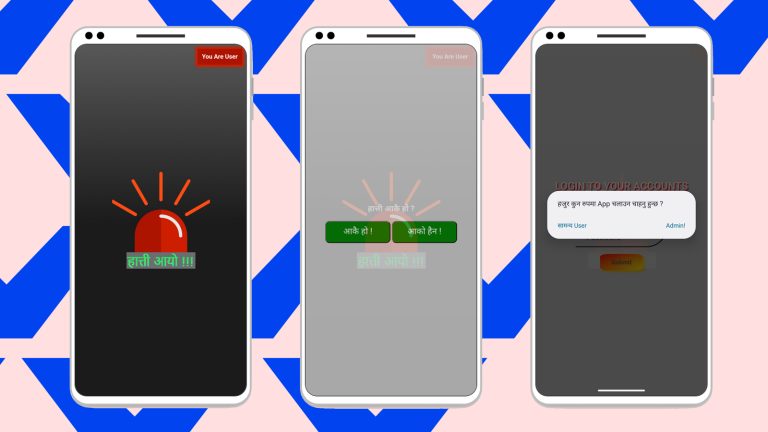Bahundangi, a village in the Jhapa district of Nepal, regularly makes headlines for its human-animal conflicts. Tuskers enter the 1,800-household village from the Mechi River crossing, a transborder river flowing through Nepal and India. In the last 10 years, at least 53 people have died in elephant attacks, while 13 elephants have been killed.
Now, a mobile app, Hatti Ayo (translation: “Elephant is coming”), is being used to avoid wild elephant attacks in the region. The app is installed on the phones of a group of volunteers led by Shankar Luitel Chettri — an elephant conservationist and resident of Bahundangi — who track elephant movement in the area.
Whenever someone detects elephant movement in the village, they push a button on the app that reads “Hatti Ayo!” A message reaches the villagers, through app notifications and SMS, as well as the Armed Police Force outpost, where officers set off an alarm that’s audible for up to 1 kilometer, signaling the entry of an elephant. The system at the outpost has a microphone that helps officers announce the exact location of the elephant or its herd. “Our idea was to make a very simple but fast early warning system which could be used offline … as internet connectivity is weak in the village,” Sandeep Niraula, the app’s Frankfurt-based Nepali software developer, told Rest of World.
“Traditionally, to scare away elephants from entering the village, we’d light firecrackers, beat plastic drums, blow trumpets, bang tin plates, light a blazing torch, or yell. This noise distraction also helps to create a warning alert to residents to remain indoors,” Chettri told Rest of World. But in the past, missed warning signals have resulted in the loss of human lives and property.
Bahundangi falls on a migratory route where generations of wild elephants have been moving for centuries from Assam in India — through the lowlands of Bhutan and North Bengal — to Nepal, in search of food and water. The app helps in ensuring safe movement for the elephants as well.
Besides Bahundangi, the mobile app is also in use in the buffer zone of the Bardiya National Park, Nepal’s largest national park.
Nepali developers build app to quell human-elephant conflict – Rest of World

